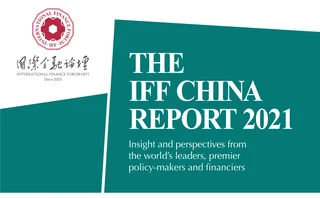
Globalisation in transition


Globalisation is in transition – but there are at least two recent moments in history with which we can draw parallels.
After the fall of the Berlin Wall in 1989 and the dismantling of the Soviet Union in 1991, the power of markets led to a free flow of goods and services, and an increase in the spread of international investment. Foreign direct investment (FDI) allowed the strengthening and expansion of global supply chains through a whole range of product sectors.

Numerous countries contributed to the production of everyday objects. Take, as an example, a volleyball – the leather would come from Germany, the glue from Thailand and the marketing from Brazil. The inputs of different countries, united by global supply chains, seemed to illustrate that – more and more – free trade and open markets were the way forward.
This also strengthened another trend in this period: the establishment and deepening of regional integration processes, including the European Union, the North American Free Trade Agreement, the Association of Southeast Asian Nations and Mercosur in South America. This regional integration could be seen as a conduit to strong globalisation trends to pause their efforts.
From 1989 until the global financial crisis that began in 2007–08, the world was undergoing deep globalisation. After 2008, a new, more protectionist phase in globalisation began, one less open to global trade – which is now increasing more slowly than global GDP – and there has been a rebirth of old import substitution policies. A number of countries are embracing local containment measures that allow for less international transaction of goods, resulting in a greater concentration of trade within individual territories. In this new phase of globalisation nestles the risk of deglobalisation.
With so much disconnect around the world, the question today is: will deglobalisation linger or are we walking into something different? My impression is that globalisation is metamorphosing yet again. There is no clear vision of what the world will look like in the future; however, three important paths should be considered.
First, the purchasing power and relative economic clout of various nations is changing. The Group of Seven (G7) has a combined GDP, measured in purchase power parity terms, of about $40 trillion. However, in the Emerging Seven economies of Brazil, China, India, Indonesia, Mexico, Turkey and Russia – known collectively as the E7 – GDP is $53 trillion.
Emerging markets are increasing their commercial exchange with each other. For example, in the first 10 months of 2020, Brazil exported more to Bangladesh than it did to all Scandinavian countries combined. Emerging economies will represent a bigger slice of the global economic pie, and the E7 will eventually wield more economic weight in global GDP than the G7 traditionally has.
The second characteristic concerns how global value chains are being rerouted by the burgeoning presence of emerging economies. This phenomenon is much broader than global supply chains, as consumption will also be impacted. China, for example, has become one of the most important sources of FDI.
Geopolitics is an important driving force in reconfiguring these new supply chains, but other factors are more consequential, such as the natural evolution of some of the world’s most important economies. Take the example of China. As a young diplomat in Brazil’s Ministry of Foreign Affairs, I undertook some research at the division of science and technology. My research considered how much countries devoted to research and development (R&D) and innovation. Early in the 1990s, China was dedicating about 0.2% of its GDP to R&D. Today it is upwards of 2%, almost reaching the average of member states of the Organisation for Economic Co-operation and Development.
China is no longer a low-cost country nor a simple manufacturer of low-value-added goods. On the contrary: it is leading the world in so many state-of-the-art technologies. As a result, some lower-value-added economic activity has migrated from China to geoeconomic neighbours such as Vietnam, Indonesia, Myanmar, Pakistan, Bangladesh and India.
It is a phenomenon that is not new in history. In the 1970s and 1980s, the ‘Asian Tigers’ – Hong Kong, Singapore, the Republic of Korea and Taiwan – displaced Japan as low-cost, low-wage manufacturers in the region. But this time around, China is a bigger economy and is thus likely to have a much more ample scope.
International trade and investment agreements are also influencing the rerouting of global value chains. In November 2020, 15 Asia-Pacific nations signed the Regional Comprehensive Economic Partnership. In a trade system where the term ‘international’ applies to the exchange of goods even at an intra-firm level, it is no surprise that these trade agreements influence the flows of investment. Ambitious countries are also promoting domestic economic reforms that allow their economies to become more business friendly and open to FDI.
We should no longer think of traditional physical infrastructure as separate from the technology
Talent takes centre stage
The final issue impacting globalisation is talent. In this context, talent means going beyond the economic theory of comparative advantage. Countries must ask themselves: ‘What can I do besides what I am already very good at?’ It is a complex challenge that, at the World Economic Forum, some call ‘talentism’. According to such a perspective, we are no longer living in an age of capitalism but in a world of talentism because human talent has become the most indispensable factor of production.
So how can development banks, such as the New Development Bank (NDB), positively contribute to this metamorphosis of globalisation? They have a major role to play, and must focus on three key areas.
The first is infrastructure. We should no longer think of traditional physical infrastructure as separate from the technology. New infrastructure must answer not only the needs of the 20th and 21st centuries, but also the demands of what will be the fourth industrial revolution – or Industry 4.0. Development banks should focus their activities on answering not only to the demands of the past, but also to those of the future.
Second, traditional approaches to certain economic models – export-led/domestic-led, public-sector-led/private-sector-led – will be redefined. Multilateral development banks should be part of this conversation.
Finally, in a world where international co-operation is so strongly needed, development banks provide the necessary framework within which countries can come together and work constructively on areas of common interest, and therefore help write a virtuous next chapter of globalisation.
Only users who have a paid subscription or are part of a corporate subscription are able to print or copy content.
To access these options, along with all other subscription benefits, please contact info@centralbanking.com or view our subscription options here: subscriptions.centralbanking.com/subscribe
You are currently unable to print this content. Please contact info@centralbanking.com to find out more.
You are currently unable to copy this content. Please contact info@centralbanking.com to find out more.
Copyright Infopro Digital Limited. All rights reserved.
As outlined in our terms and conditions, https://www.infopro-digital.com/terms-and-conditions/subscriptions/ (point 2.4), printing is limited to a single copy.
If you would like to purchase additional rights please email info@centralbanking.com test test test
Copyright Infopro Digital Limited. All rights reserved.
You may share this content using our article tools. As outlined in our terms and conditions, https://www.infopro-digital.com/terms-and-conditions/subscriptions/ (clause 2.4), an Authorised User may only make one copy of the materials for their own personal use. You must also comply with the restrictions in clause 2.5.
If you would like to purchase additional rights please email info@centralbanking.com test test test







